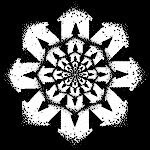And does it matter? I say, with all due respect it can and it does.
Scientific inquiry is to technology as spiritual inquiry is to religion. The former should be encouraged in all individuals as part of personal evolution, where as the latter are practical social applications of these admirable pursuits that usually become tools for manipulating the masses.
From a cybernetics point of view science becomes dangerous when it becomes too reductionist or orthodox. In principle all scientific theories should eventually become extinct as the whole of knowledge advances.
Thomas Kuhn’s Structure of Scientific Revolutions describes the social dynamics of the culture of science as it deals with the inevitable succession of paradigm shifts that is the evolution of human knowledge.
Citing the Copernican revolution and the scientific advances of the Enlightenment he illustrates how, when the ruling paradigm is confronted with persistent anomalies, scientists from the fringes propose new theories, and how the forces of "normal" science defend the old paradigm until a fully formed and more robust mindset is developed out side the orthodox system.
As with religion's inquisitions and crusades, we've seen the dangers of scientific theories being used to justify political ends, for example the extreme Darwinism of Nazi Germany.
When science is used to justify the ends of capitalism it also tends toward reductionism at the expense of the masses, since capitalism is by its nature focused on one end: Profit.
Allopathy (Western Medicine) has often found itself at odds with its fundamentally altruistic Hippocratic roots. From bloodletting to electroshock therapy to mass vaccinations, the desire to pump up profits and human ego have resulted in the needless deaths and suffering of millions.
Vaccination programs are a perfect example of a dangerous mix of the utilitarian paradigm being applied to human beings. The very term "herd immunity" should be a hint that this kind of medicine is not about individual well being.
There is plenty of evidence to indicate vaccinations are causing a variety of epidemics in our society from autism to Acquired Immune Deficiency Syndrome (AIDS).
The history of the medical establishment’s battle with the epidemic of AIDS is an excellent case study of the scientific establishment facing a persistent crisis to its paradigm. Since its discovery, many opposing theories about the origins and epidemiology of this syndrome have been proposed. Scientific careers have been made and lost over the successes of these theories.
Occasionally, the medical community has faced challenges and criticism from inside and outside the field and we will see how they, individually and collectively, they have reacted to it. We will see that, as Kuhn predicted, even when confronted with questions that challenge their most fundamental tenets, the proponents of “normal science” will close ranks and defend their own. This is a demonstration of the depth of their commitment to the paradigm that provides not only theories, tools and methodologies, but also social status and norms of behaviour.
There is some evidence that this creates a sense of entitlement that comes with an undercurrent of racism, sexism and homophobia. It is arguable that there have been times in the history of this epidemic where these prejudices have clouded the scientific objectivity, perhaps to the detriment of many.
For a full paper on the subject go to AIDS, HIV and Reductionism in the Allopathic Paradigm.
New version has 'fountain of crown'
-
There's a new Psiche post on the new version of the blog!
http://www.palyne.com/blog.psiche/the-fountain-of-crown/
Don't forget this blog has changed addres...
15 years ago



